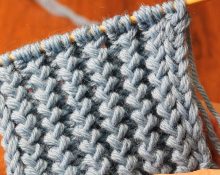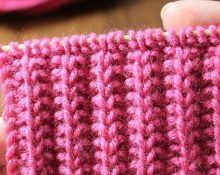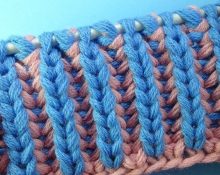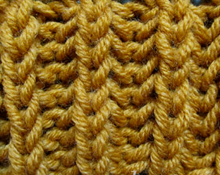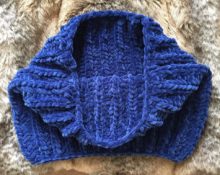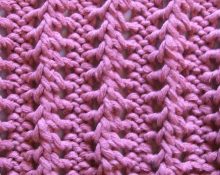Double elastic band is a lifesaver for knitting accessories such as hats, snoods and scarves. The edges of the product are not folded, and the pattern on the back does not differ from the front. Using a double elastic band, you can knit a lot of interesting and incredibly warm things, and also use it to process the edges of the sleeves, the neckline and the bottom of the product.
Features of double elastic
As I already said, this is a great option for winter accessories. And the pattern can also create a simply chic, dense, “stand-up” collar. The elastic band is knitted in an extremely unusual way: essentially, using only knit stitches. Yarns are also used in this pattern, and the result is a double-sided dense and neat fabric. By the way, the hollow elastic band is simply ideal for headbands. And you can’t think of an even better option for creating strips for zippers. And also in places where an elastic band should be inserted (for example, into the waistband of a skirt), this is also an excellent solution.
Attention! Although the pattern is called double or hollow elastic, the result is two fabrics of facial loops connected at the bottom and top.
Of course, with all the obvious advantages of this pattern, it has one, but significant drawback - yarn consumption. It is twice as high here as when knitting stockinette stitch. However, any pattern, even a simple satin stitch, requires more yarn consumption.
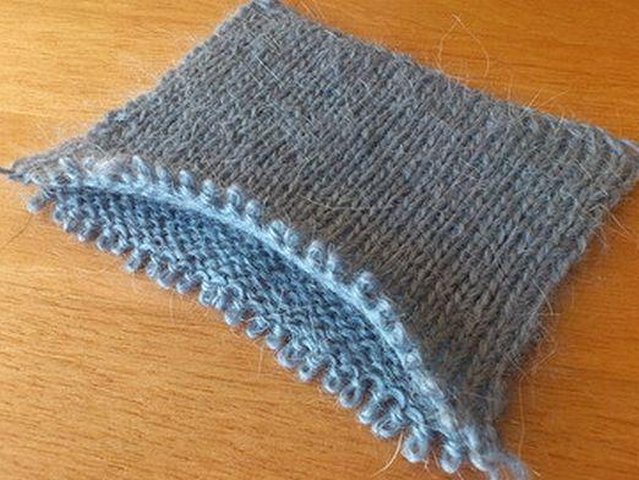
How to knit double rib with knitting needles?
To create a fabric using this pattern, you need to cast on an even number of loops. The edges at the beginning of the row are removed without knitting, and at the end they are brought out purl-wise.
- The first row is knitted according to the pattern: 1 knit + 1 loop without knitting (working thread in front of the eyes).
- In the second row - 1 knit behind the front wall + 1 purl is removed without knitting (working thread in front of the eyes).
Advice! To make this pattern more elastic at the bottom, knit the first row with a regular 1*1 elastic band.
When you knit in the round, you first knit a row of knit stitches and yarn overs behind them, and in the next (second) row, each knit stitch is removed with the main thread while working. Each yarn over is knitted with a purl loop. In the third row, knit stitches are knitted, and purl rows are removed without knitting with thread before work.
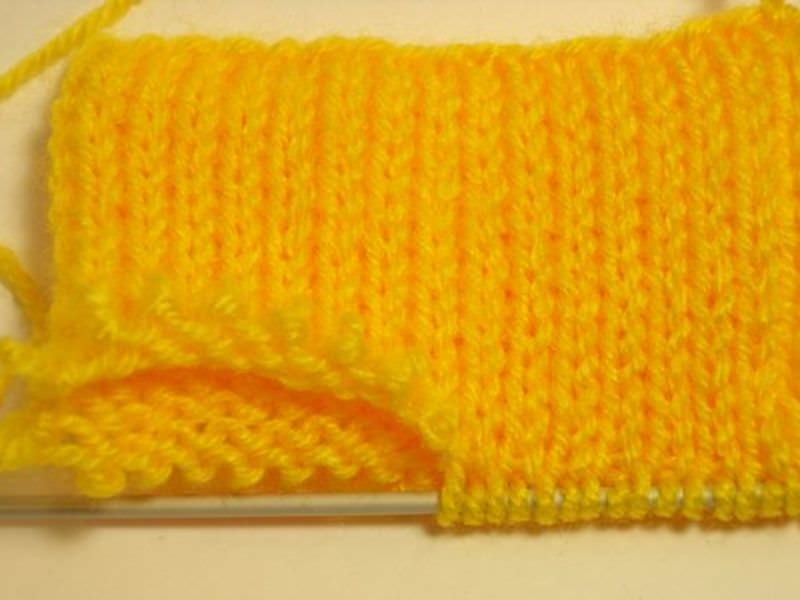
@1igolka.com
Useful tips for calculating loops for a product
In fact, all recommendations of this kind can be reduced to one thing: it is imperative to knit a sample and it is no less important to carry out a WTO. All master classes that indicate the exact number of loops and rows are not worth the attention and effort. After all, all yarn is different, and even if you purchase exactly the same one, you risk not getting the density described in the source. Therefore, you need to knit a sample - usually a 10*10 cm square.
Important! The larger the sample, the smaller the error in calculations on the finished product.
Moreover, a sample is created using the same pattern and the same knitting needles as it is planned to knit the main fabric.Without wet-heat treatment, you should also not take up knitting. You don't need surprises, do you? Threads with different compositions will behave differently after washing: the product will shrink or, conversely, stretch.
Then the number of loops and rows per 1 cm is calculated, the required measurements are taken on the body and the resulting centimeters are multiplied by the number of loops per 1 cm. Sometimes you need to add a few centimeters to the freedom of fit - it all depends on the model you choose.

@YouTube
Hollow elastic can be used in a wide variety of things. Simplicity of execution will help create, for example, very warm double hat, created in 1 thread. You can knit mittens, a snood, a scarf. In any option, you will get an incredibly warm and neat thing, the edges of which do not curl.


 0
0